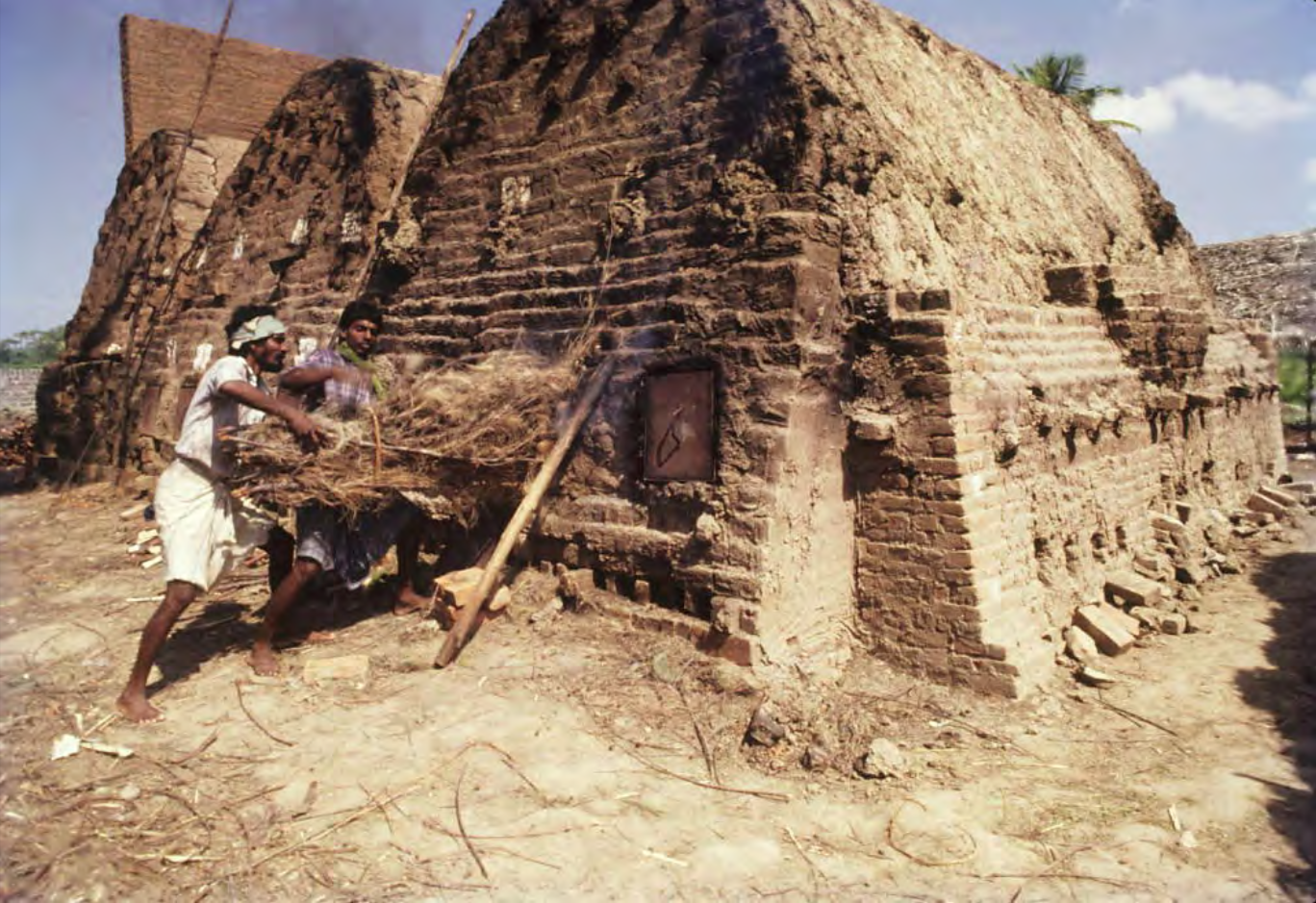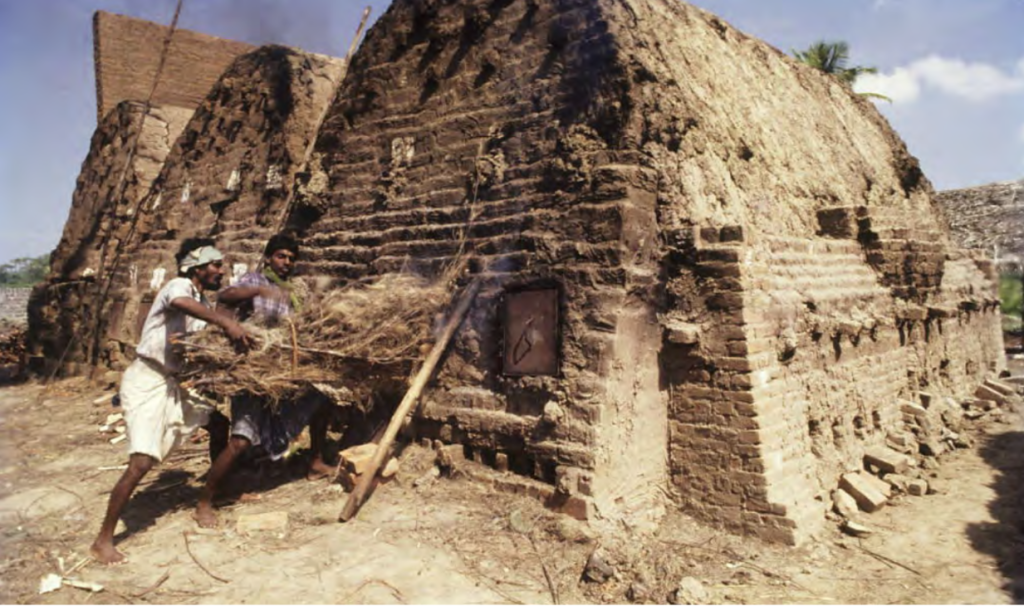Ray Meeker, is known for his earthen stoneware artefacts has also experimented with baked insitu mud structures in Pondicherry and Auroville. These experiments laid the foundation for many architects to tread on the path of sustainability by going back to making houses and other liveable structures based on the earth. Before we charge on to know more about the fired houses and other works of art made by Ray Meeker and his wife Deborah Smith. Lets find out a little bit more about the ceramist and how he got into this field.
![PDF] BUILDING WITH FIRE Baked-Insitu Mud Houses of India: Evolution and Analysis of Ray Meeker's Experiments | Semantic Scholar](https://d3i71xaburhd42.cloudfront.net/a8edf97349be9c4b049ae9ac8f882e828408840e/149-Figure5.58-1.png)
Who is Ray Meeker?
Ray Meeker studied art on a basketball scholarship in Pepperdin College between 1962 -1965. Post which he pursued architecture from the University of South Carolina in 1969, this is where he met his wife and long-time professional partner Ms Deborah Smith, who had returned from Japan after studying Japanese at Stanford. Meeker and his partner had discovered the Eastern philosophy and found themselves to be gravitating towards it. After working together for a few projects in Turkey, Iran, Pakistan, Meeker followed Deborah to Pondicherry in 1971. Deborah who had arrived in Pondicherry before Meeker, had a word with The Mother of Sri Aurobindo Ashram and convinced her to start a Glazed pottery unit in the vicinity. Thus, began the journey of Meeker and Smith’s studio, the Golden Bridge pottery in a small 10×20 coconut leaf shed. The work started with functional stoneware which was made from the locally sourced raw material, clay and that work grew to a larger team of potters working on over 200 works in a year now. This gave way to a new kind of craft that put the region on the map, it was called the “Pondicherry Pottery”, withe demand for ceramics came from national and international buyers.
With his mud house structures, Ray has inspired an entire generation of young contemporary ceramists with his experiments and his mud houses project that went on for years. The cost efficient mud structure houses were made to tackle India’s growing issue of housing for its people and also to provide people with a low cost and most sustainable and durable option of living.
Ray and His Fired Mud Houses
The Bona fide legend in ceramics soon began experimenting with larger mud structures, his early creations called ‘Fire Stabilised Mud building’ was made in 1998, while his first stabilised mud house was built in Auroville. He did some 20 more experiments thereafter, one monumental design was the shrine built in the Nrityagram Dance Village in Bangalore in 1999. Ray Meeker states to have been heavily inspired by Nadir Khalili, the Iranian architect who had first envisioned the concept of houses with baked mud.

First Attempt
The first structure that Ray Meeker made was based on Nubian Vault method building and was very small and his practiced the art of perfecting this for a few years, with many vaults being made and re-made. His first structure for an actual client in 1988 was to build the Auroville Information and Reception centre (AVIRC), it was a 2 vaulted room structure with a common roof again based on Nubian vault method. Many local and sustainable materials such as clay, rice, husk, cow-dung was used in the foundation of the building, while standard cement based plaster was used on the exterior of walls. A kitchen, bathroom, toilet and even an open courtyard was added to the final plan.
Many more such houses were then built in Auroville, he did the low cost housing in Ayothiapatinam, Salem in Tamil Nadu which was supported by District Rural Development Agency (DRDA), this was a jump from client servicing corporate and private spaces to a more government sanctioned space. The citizens who lived in those houses eventually took care of the houses very well and extended the structures keeping the foundation intact once their families grew too.

In the mud made houses, Ray was able to use locally available raw materials, it was labour intensive and low cost, as discussed before. These were ecological friendly structures but caused excessive fuel consumption that led to its eventual downfall. Ray Meeker did not continue with this idea beyond 2000s and moved to other avenues of using his skillset in ceramics. A book on his journey of working on the fired houses came out in 2018 published by CEPT University Press. The book extensively documented his research methods and his practical experience of going through the entire journey.His practices were also documented by another brilliant architect, Anupama Kundroo, who herself has worked on many sustainable and eco-friendly spaces in Auroville and Pondicherry.
Other Works of Art
Once he abandoned his mud houses, he moved on to also making large scale ceramic sculptures which were dramatic in their impact. One such monumental piece is called Passage which at one point greeted you at Hyatt Regency. The work of art stands at 21 ft tall which has scratches of scripts and symbols that make it a captivating piece of art/craft.
The influential figure in the world of ceramics, Ray Meeker’s impacts goes beyond the studio he made some 40 years ago, he is an educator, experimenter, who is regarded as one of the lumineers of ceramics in the country. Ray Meeker has fostered a vibrant community of potters in India who managed to submerge his architectural background with the ancient art of pottery and will continue to inspire upcoming contemporary potters/ceramists in the future.
Feature Image: BUILDING WITH FIRE Baked-Insitu Mud Houses of India | Courtesy: Semantic Scholar
References:
Anupama Kundroo (2008), Building with Fire, baked insitu mud houses of India – Evolution and Analysis of Ray Meeker’s Experiments, Technical University of Berlin.
https://www.stirworld.com/inspire-people-luminaries-of-our-times-ray-meeker
https://www.thehindu.com/features/friday-review/art/a-passage-to-india/article3775186.ece
aic-iac.org- Building with Fire: The Pioneering Work of Ray Meeker
https://www.aic-iac.org/en/editorial_n0/makers/ray-meeker/
Shaping Clay and Consciousness: The Artistic Journey of Ray Meeker in India





